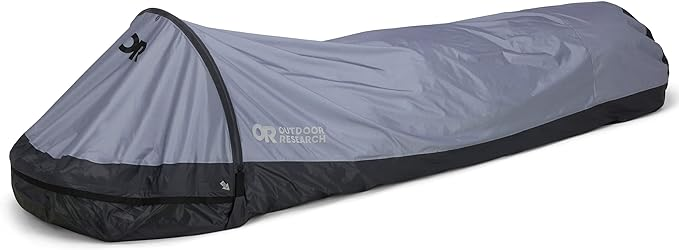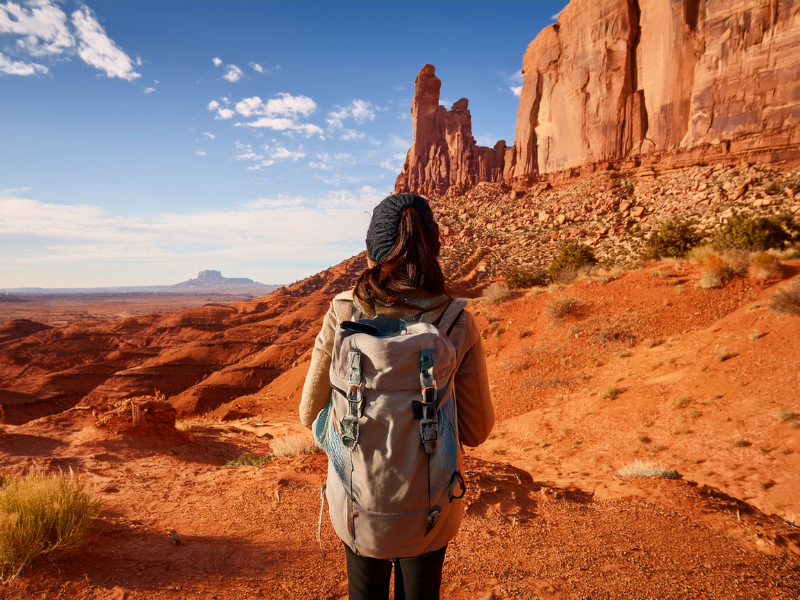The Best Tent for Every Adventure: Pros & Cons by Purpose
- John Petersen
- Jun 25
- 8 min read

When planning an outdoor trip, choosing the right tent can make or break your adventure. Whether you're heading out on a solo backpacking trek, a family camping weekend, or a rugged mountaineering expedition, the right shelter is crucial for comfort, safety, and peace of mind.
In this guide, we’ll break down the most common tent types by activity—exploring their pros and cons, so you can make an informed choice before you click “add to cart.” If you’re looking to shop, we’ve included links to trusted brands and gear we recommend along the way.
1. Backpacking Tents
Backpacking tents are the go-to shelter for hikers and wilderness explorers who need to carry all their gear on their backs. These tents are designed with mobility and efficiency in mind—ultralight, compact, and durable enough to stand up to the elements on the trail. Unlike larger camping tents, backpacking tents focus on the essentials: enough space for one or two people, a fast pitch design, and materials that won’t weigh you down after miles of trekking. If you’re aiming to go far and fast, this is the tent you want in your pack.

Pros:
Ultra-lightweight and compact
Quick to set up and pack down
Designed for durability in backcountry conditions
Cons:
Tight interior space—usually fits 1–2 people snugly
Less headroom and comfort for extended stays
We Recommend:
If you're looking for the perfect balance of low weight and livability, the Mountain Hardwear Strato UL 2 is an excellent choice. At just over 2.5 lbs, it packs down small but still offers generous headroom, dual doors, and smart pole geometry for easier movement inside. It's ideal for solo hikers who like a bit of extra space—or for two backpackers keeping things light. Great airflow, quality construction, and a minimalist design make this tent a standout for 3-season treks.
2. Camping / Car Camping Tents
Camping tents—especially those used for car camping—are designed with comfort, space, and ease of use in mind. These are the roomy shelters you bring when you’re setting up near your car, where weight isn’t an issue and you can afford some luxuries. Think tall ceilings, multiple rooms, gear storage, and space for air mattresses. Whether you're on a family trip, camping with friends, or just want to relax under the stars without sacrificing comfort, car camping tents are your best bet.

Pros:
Spacious interiors, ideal for cots or air mattresses
Easy setup for casual campers
Great for socializing and lounging
Cons:
Bulky and heavy
Less wind-resistant than smaller designs
We Recommend:
If you're after a spacious and sturdy family tent, The North Face
Wawona 6 Tent is a standout choice. With roughly 86 ft² of floor space and a peak height over 6 ft, adults can stand and move comfortably inside . It has a cavernous vestibule perfect for muddy boots or bikes, and high-quality DAC poles ensure durability in wind and rain. Some rainfly coverage gaps mean it's best used in fair weather or summer conditions, but this tent is a reliable and roomy basecamp for families and casual campers
3. 4-Season / Mountaineering Tents
When you're camping above the treeline or heading into winter wilderness, 3-season tents just won’t cut it. That’s where 4-season or mountaineering tents come in. These heavy-duty shelters are built to withstand intense cold, snow loads, and high winds. Typically featuring strong poles, steep sides to shed snow, and reinforced fabrics, these tents are trusted by climbers and alpine adventurers around the world. If your adventure takes you into unpredictable, extreme weather—this is your fortress.

Pros:
Designed for wind, snow, and low temps
Strong poles and durable materials
Often includes snow flaps and vestibules
Cons:
Expensive
Heavier than 3-season tents
Less ventilation in warm climates
We Recommend:
The North Face Mountain 25 is a “bomber” shelter designed for serious winter expeditions. Featuring a robust seven-strut pole structure and fully taped waterproof fly, it’s built to endure gale-force winds and heavy snow . Weighing just under 9 lb, it offers a spacious 32 ft² floor and dual vestibules—ample room to sit, cook, and organize gear during basecamp stays. The included footprint enhances protection and mud resistance, a popular recommendation among experienced users. Ideal for alpine and winter camping, the Mountain 25 combines rock-solid durability with smart livability. It’s heavier and pricier than most tents—but if your goal is to conquer wild weather, it’s worth every ounce.
4. Ultralight Tents
Ultralight tents are designed for the purist adventurer—those who want to carry the bare minimum without compromising on shelter. These tents strip away every unnecessary ounce and often use your trekking poles instead of tent poles to save weight. They're ideal for long-distance hiking, thru-hikes, and fastpacking trips where your gear must be as light and efficient as possible. While not as durable or spacious as traditional models, they shine when every ounce counts.

Pros:
Feather-light and packable
Often uses trekking poles to cut weight
Ideal for long-distance hiking where ounces matter
Cons:
Delicate materials may need more care
Usually sacrifices comfort and features for weight savings
We Recommend:
Looking for budget-friendly ultralight shelter? The Clostnature 1‑Person Ultralight Tent offers a surprising amount of features for around $65. At only 3.7 lb packed, it delivers full mesh walls, two D‑shaped doors, dual vestibules, and a waterproof bathtub floor with PU5000 coating—matching specs often found in more expensive gear.
This tent is praised for quick and intuitive setup, solid ventilation, and thoughtful touches like interior pockets and rainfly buckles .
If you're beginning in ultralight backpacking or need a dependable solo tent on a budget, the Clostnature delivers impressive value and features often reserved for higher-end models. Just be aware it’s best suited for mild conditions—treat the fabrics carefully and consider using a footprint for extra floor protection.
5. Bivy Sacks
If a tent is a house, a bivy sack is a sleeping bag cover with a roof. These compact shelters are designed for extreme minimalism, solo trips, and situations where speed and stealth are key—like alpine climbing or emergency overnights. A bivy sack slips over your sleeping bag to provide waterproofing and some insulation from the elements. It’s the lightest form of shelter you can carry, but also the most confining. Not for the claustrophobic—but for those pushing boundaries, it’s a life-saver.

Pros:
Smallest and lightest shelter option
Discreet and fast to set up
Great for stealth camping or alpine bivouacs
Cons:
Claustrophobic for many users
No room for gear or movement
Limited weather protection compared to tents
We Recommend:
The Helium Bivy is widely considered a benchmark in minimalist shelters, combining ultra-lightweight design with a clever hooped pole that keeps fabric off your face.
Setup is remarkably quick; slide the pole into the sleeve, toss in a pad and bag, and you're good to go. For fast-and-light adventurers—like thru-hikers, bikepackers, and alpinists—who prioritize weight and simplicity.
6. Pop-Up Tents
Pop-up tents are all about convenience. They are pre-assembled with spring-loaded frames that literally pop into shape in seconds. These tents are perfect for casual camping, music festivals, backyard campouts, and beach trips where ease of use is more important than durability. While they’re not designed for extreme conditions, they’re a favorite for weekend warriors and first-time campers who want zero stress during setup.

Pros:
Instant setup—springs open in seconds
Fun and convenient for quick getaways
Cons:
Poor wind resistance
Bulky when packed
Not suitable for serious conditions
We Recommend:
If you’re looking for a quick and comfortable shelter for camping weekends, the Coleman Skylodge Instant Tent is a fantastic pick. It sets up in just 1 minute, thanks to its pre-attached poles, and fits up to 4 people with ample room for gear and standing space.
Its WeatherTec™ system offers solid rain protection with welded corners and inverted seams, making it more reliable than many other pop-up options. The wide door, vented roof, and panoramic windows create a spacious, airy interior—great for warm-weather use. While it’s not meant for high winds or alpine terrain, it’s ideal for family car camping, festivals, or casual adventures. The Skylodge offers a rare combination of speed, comfort, and weather resistance for casual campers. If you value quick setup and want to stay dry during summer storms, this pop-up tent delivers excellent value without sacrificing livability.
7. Roof-Top Tents
Roof-top tents turn your vehicle into a mobile basecamp. Mounted on top of your car, truck, or SUV, these tents fold out into elevated sleeping quarters with built-in mattresses and rain protection. They're ideal for overlanders, vanlifers, and road trippers who want the freedom to camp anywhere the road leads. No worrying about rocky ground, wet soil, or bugs—just climb up and rest above it all.

Pros:
Elevated sleeping—keeps you off wet or rough ground
Built-in mattress for comfort
Cool factor: camping on top of your vehicle!
Cons:
Expensive and heavy
Can be awkward to climb in/out
Limits where you can drive or park
We Recommend:
For an easy, durable, and stylish rooftop camping setup, the WildFinder Hardshell Rooftop Tent is an excellent option. Designed to mount on most vehicles with crossbars, this tent pops open with a gas-strut-assisted lift and offers a spacious interior for 2–3 people.
Its hard shell exterior keeps it aerodynamic and weatherproof when closed, while the waterproof canvas sides and mesh panels allow for ventilation and rain protection when open. It includes a built-in memory foam mattress, telescoping ladder, and multiple gear pockets—perfect for road warriors who want to camp in style and comfort.
If you want to turn your car into a mobile adventure rig, the WildFinder Hardshell Tent delivers excellent value and simplicity. With a solid construction, fast setup, and cozy sleep space, it's ideal for road trippers, overlanders, and weekend wanderers who want reliable shelter without the hassle of pitching a tent.
8. Inflatable Tents (Air Tents)
Inflatable tents (or air tents) use air beams instead of traditional poles, making setup incredibly quick and beginner-friendly. With just a pump, these tents expand into spacious, sturdy shelters ideal for families and glampers. They're often stylish, comfortable, and surprisingly durable—perfect for those who want maximum convenience without fiddling with poles and instructions.

Pros:
No poles needed—inflates quickly
Surprisingly sturdy in wind
Great for luxury or casual camping
Cons:
Can be pricey
Heavier than regular tents
Requires a pump (manual or electric)
We Recommend:
The Zempire Evo TM V2 is a top-tier inflatable tent designed for families or groups—and it delivers both comfort and convenience. It inflates in under two minutes with the included pump and unfolds into a spacious, full‑head‑height shelter that comfortably fits 4 people (or up to 6 in a pinch) with distinct living and sleeping areas.
Key features include two bedrooms separated by a zip-out divider, a large front awning for lounging or gear, and excellent ventilation—thanks to multiple windows and adjustable airflow zones to manage condensation. The 6,000 mm waterproof fly combined with the sturdy airframe makes this tent resilient in heavy rain and wind.
If you're looking for car-camping comfort without the pole fuss, the Evo TM V2 is an excellent choice. It offers rapid setup, roomy interiors, weatherproof construction, and intuitive layout. Sure, it’s heavier and pricier—but for weekend families, road-trippers, or anyone seeking hassle-free shelter, it’s a premium upgrade.
There’s no such thing as a one-size-fits-all tent. Whether you're chasing mountaintop sunrises, setting up base camp for the family, or trying to shave every ounce off your pack weight, your tent should reflect your style of adventure.
Use the pros and cons above to narrow down the best tent type for your needs—and when you’re ready to upgrade your gear, we’ve got curated recommendations to help you find tents that are tested, trusted, and trail-ready.
Happy camping, and don’t forget to look up—your tent might just be the coziest place to sleep under the stars.


Comments